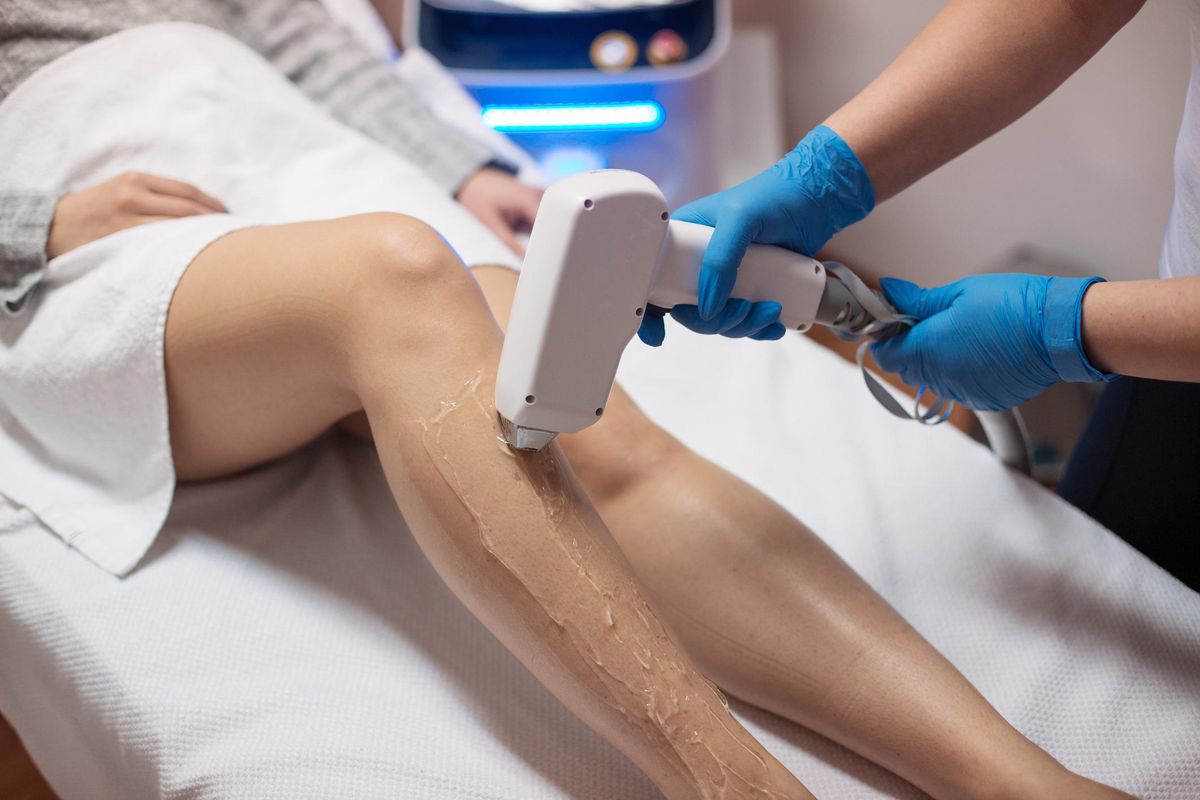What is it? A noninvasive technique that uses a low-energy laser beam to disrupt the hair follicle growing cycle.
| Top Five Nonsurgical Cosmetic Procedures: |
Why might I get it done? To remove unwanted hair on your face or body.
Who is it appropriate for? Best for people with light skin and dark hair, although some lasers work on darker skin, and certain medications can be applied to lighter hair to improve follicle destruction. You should also have the patience and financial means to undergo the several sessions required, along with occasional maintenance treatments.
How is it done? You wear goggles to protect your eyes from the damaging laser rays. The laser is applied directly to your skin and the intense heat follows the pigment of the hair down to the follicle and destroys it. You don't feel the heat on your skin, however. Depending on the area to be treated, it may take a few minutes (upper lip, eyebrows) or a couple of hours (legs, back).
What is the pain factor? Pain varies depending on the area, ranging from slight stinging to feeling like a rubber band snapping against your skin. However, an anesthetic cream can be applied to the area. Just make sure your doctor uses the lowest amount possible of numbing cream because the FDA has received reports of serious and life-threatening side effects after using large amounts of topical anesthetic during laser hair removal.
What are the expected results? Permanent reduction in hair; the FDA does not allow manufacturers to claim permanent hair removal.
How long does it last? Long-term once the majority of hair follicles have been destroyed. Because hair grows in cycles, you need several sessions (three or more every four to eight weeks) to destroy most of your hair follicles.
Who does it? Plastic surgeons and dermatologists. Although licensed physician assistants or nurses may do it, make sure the physician is on site. Beware of medical spas and salons that do not have an on-site physician or that allow nonmedical staff to perform the procedure. There are, however, two at-home laser devices available.
Risks and warnings: Side effects include blistering, discoloration after treatment, swelling, redness and scarring.
Cost: $314 a session.
Recovery time and considerations: No downtime, although you may have some slight swelling and redness for a couple of days. Stay out of the sun before you undergo the procedure and while you're healing. Also give up plucking, waxing or electrolysis for a couple of weeks before the procedure since they affect the hair follicle and can interfere with the laser procedure.
What to know before you go:
- Consider starting laser hair removal treatments in the late fall or early winter so that you can complete your visits when you're less likely to be out in the sun.
- If you need to remove hair in between treatments, shave with a razor that won't interfere with your hair growth cycle; stubble is easier for the technician to work with.







